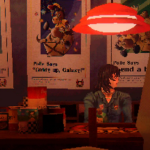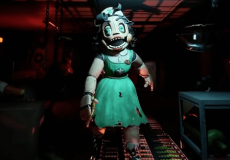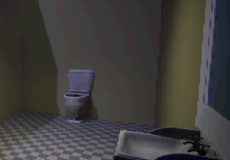

Dollmare
Advertisement
Dollmare places you in a job that seemed harmless at first—working late hours at a doll factory to earn money for rent. But very quickly, the routine becomes unsettling. Each shift requires you to examine dolls for irregularities, but the anomalies go beyond cracked paint or mismatched eyes. Some dolls seem to move when you’re not looking. Others appear normal until the lighting shifts. With no monsters to chase you and no weapons to wield, the horror lies entirely in observation and the creeping realization that something is deeply wrong.
Advertisement
Similiar games
Dollmare places you in a job that seemed harmless at first—working late hours at a doll factory to earn money for rent. But very quickly, the routine becomes unsettling. Each shift requires you to examine dolls for irregularities, but the anomalies go beyond cracked paint or mismatched eyes. Some dolls seem to move when you’re not looking. Others appear normal until the lighting shifts. With no monsters to chase you and no weapons to wield, the horror lies entirely in observation and the creeping realization that something is deeply wrong.
The Factory Isn’t Empty
Your tasks are straightforward on the surface. You inspect one doll after another, marking defects and ensuring only those deemed “safe” continue down the production line. However, the quiet tension builds. Strange instructions appear in your manual. The lights flicker at odd times. The factory makes sounds that don’t fit with machinery. You begin to notice patterns—or maybe you’re imagining them. Nothing jumps out, but everything feels off.
Key activities during the work shift:
· Examine dolls for visual or behavioral anomalies
· Operate and repair production equipment
· Follow unusual safety procedures without questioning
· Explore hidden sections of the factory
· Collect clues about the dolls’ origin and the company’s purpose
Shifting Events and Unpredictable Play
Dollmare doesn’t rely on traditional scripted horror events. Many elements change each time you play. Some dolls display behaviors you won’t see in another run. The environment subtly reacts to your actions. This design means every playthrough presents different threats and new pieces of the puzzle. There is no single path, no right order—only your perception, which becomes less reliable the longer you stay on the job.
A Horror Game Without Jump Scares
What makes Dollmare unique is how it creates fear without relying on loud noises or chase sequences. Instead, dread builds slowly. A door that was closed is now open. A doll is facing the wrong way. You feel watched, but no one is there. The game’s atmosphere grows heavier with time, pressing on the player through silence and subtle changes. The further you go, the more you question if the real threat is in the dolls—or in yourself.
Dollmare is a quiet horror experience built on careful attention, mounting unease, and an unpredictable structure. The fear doesn’t come from running or hiding—it comes from standing still, looking at a doll, and realizing something is watching back.
Discuss Dollmare




















